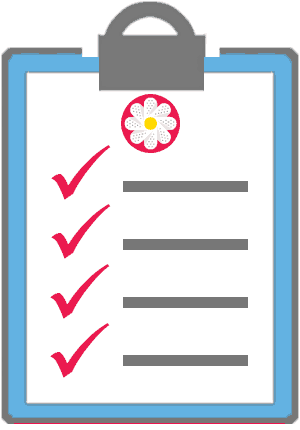5 Strategies to Prevent Denied Work Comp Bills

California does not make it easy for work comp providers to get paid. The time and effort necessary to obtain proper reimbursement is an unfortunate reality of a system weighed against providers’ interests. But all is not hopeless. Work comp providers can ensure correct, timely payment for the treatment of injured workers.
They just need to know how.
With a few basic strategies, providers can drastically reduce the drag on their revenue stream. The following tips include links to our most helpful instructional articles from the last few months. By adhering to these 5 principles, proper reimbursement can be less of an uphill battle and more of an expectation.
1. ALWAYS Get Proper Authorization
This strategy is number one for a reason. If you do nothing else, get your Requests for Authorization (RFA’s) right. The RFA and Utilization Review (UR) system isn’t perfect, but it’s the one we’ve got. Always submit complete, compliant requests for authorization using the official Division of Workers’ Compensation (DWC) Form RFA, and include all required information.
On the flip side of that coin, demand compliant responses to compliant RFA’s. While the DWC does not require the insurer’s claims administrator to use DWC Form RFA, know the content and timeliness requirements for the claims administrator’s response.
We cannot stress it enough: authorization is the only guarantee of payment.
2. A Complete Bill = Compliant Billing
The requirements for compliant provider bills are extensive and strict; pages of rules fill the DWC’s Medical Billing and Payment Guide, the Labor Code, and the California Code of Regulations. For a bill to be payable, it has to be one thing above all: complete. A bill for authorized services must include all the required, relevant information. That includes:
- The correct form (for example, the CMS 1500 for health care providers)
- The correct billing codes
- A correctly filled out form
- The required reports
These 4 requirements are non-negotiable. Insurers’ claims administrators are free to reject any bill that falls short. To make sure your office has all the information needed to meet these standards, we strongly advise using a thorough intake form — a great example of which we offer free to all our readers.
3. Keep Up on the OMFS
One of the most frustrating aspects of the work comp billing system is the ever-changing Official Medical Fee Schedule (OMFS). This collection of billing codes and their respective reimbursements can be a hellscape of confusion, plagued by constant updates (sometimes applied retroactively) and convoluted formulas.
This often leaves providers behind the proverbial 8-ball, submitting bills with outdated codes or incorrect reimbursement expectations.
We recommend signing up to receive DWC Newsline alerts, through which the agency announces OMFS changes. Our blog reports on those changes, and we add updated payment information not available in the Newsline. Of course, daisyBill clients have access to our OMFS Calculator, constantly updated to reflect the latest changes.
4. Establish Direct Electronic Connections
One way to make sure the insurer’s claims administrator pays the bill is to make sure they get the bill in the first place! We can’t say enough about the inadequacy and inefficiency of outdated paper billing. With paper, there are simply too many opportunities for bills to be lost, delayed, or otherwise mishandled.
That’s where electronic billing comes in.
With e-bills, there is instant, automatic proof of sending and receipt. There is no possibility of losing the bill in the mail. However, it’s imperative to establish a direct electronic route to the insurer’s claims administrator. Providers that simply entrust their e-bills to one clearinghouse risk falling out of compliance, making the bill legally rejectable.
5. Proper E/M Documentation
Finally, it’s important to understand how to properly bill for incidental Evaluation and Management (E/M) services like record review and patient counseling. These services can be tricky to bill for, given their more nebulous nature. Establishing and recording exactly what goes into these services is key to billing for them accurately.
Billing codes for E/M services are delineated according to specifically defined levels of service. Which level to code for generally depends on the complexity of the service. For a fuller explanation of how to bill for E/M services, see our recent blog and FAQ. We also offer an E/M Services checklist, so providers can establish exactly what to bill for.
Work comp billing is, unfortunately, a struggle for providers. Providers should insist on proper reimbursement for the treatment of injured workers, whatever it takes. Until the system radically improves, we’ll be here to help.
There’s one more way to ensure correct, timely payment: use daisyBill. Our Billing Software makes compliant billing a snap, resulting in faster payment, time saved, and revenue protected. Schedule a free demonstration today.
REQUEST DEMO
DaisyBill provides content as an insightful service to its readers and clients. It does not offer legal advice and cannot guarantee the accuracy or suitability of its content for a particular purpose.



.png)
.gif)